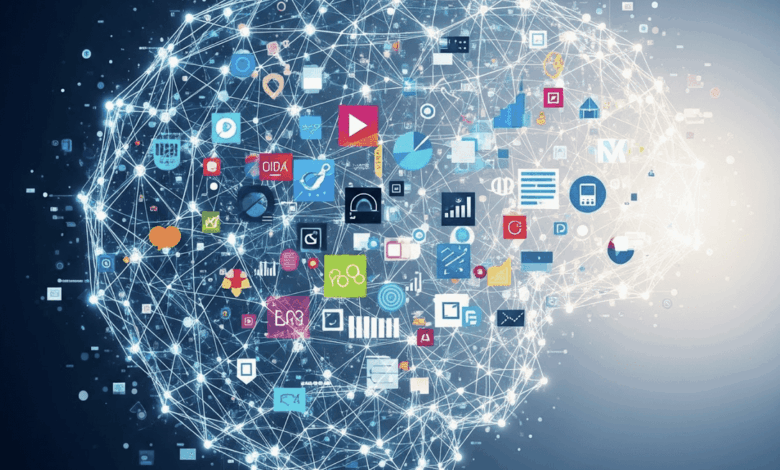
From panic to practicality: The shift in AI conversations
Things move fast in PR. After a short but intense period of handwringing about AI, the debate has quickly evolved. For those running agencies, it is no longer if but how they adopt it into their workflows and the day-to-day activities.
AI as a toolkit, not a crutch
AI is an essential toolkit for augmenting and supporting daily functions. It should not, however, be used to replace critical thinking or become a frictionless funnel for work to be waved through unquestioned. At the same time, canny and proactive use of AI will open new business opportunities for agencies and enhance your overall value proposition.
Augmenting, not replacing, human insight
At Grammatik, we help clients in the B2B tech space. As part of our work pipeline, we use AI to help drive what we do. At an operational level, we use Fathom to assist during fast-paced calls, supplementing our work and gaining speedy and accurate notetaking without human intervention. This helps our team concentrate on other elements of our meetings, focusing on building relationships with clients and positive human interaction.
When it comes to market intelligence, AI should not be used to ‘blag’ or ‘wing’ it. Deep understanding of the verticals an agency focuses on will always remain an essential requirement. Writing convincingly about a topic takes understanding You can’t just follow a strategy spun up by AI like instructions for a set of flat packed furniture is doomed to failure.
Using AI Without Losing Your Voice
GPTs can prove helpful for iterating or structuring PR content – and pairing it with a press release template ensures consistent structure when converting ideas into media-ready announcements. Or helping to split up a longer thought-leadership piece into short, pithy posts for social media. But wholesale replication of what has been generated by ChatGPT or another tool will be a race to the bottom – both for your agency and for the businesses you’re supporting.
Shoving a few queries into ChatGPT and parroting what comes out the other end is not an option, and that will quickly unravel. In practical terms, AI has already been a godsend on some of our agency projects. Not only because of the capability it brings to the table, but also due to the speed and accuracy of the service it delivers.
Real-world wins: How AI helped us deliver under pressure
So, how can it unlock opportunities?
When we were approached to film and edit a PR video case study for a major client, we had the task of translating Dutch interviews into English subtitles. Without AI, this would have been an impossible task, since our editor is an English speaker who found Dutch to be, well, double Dutch. However, we were able to deliver high-quality, accurate work while overcoming the language barrier, even without the human skills on tap to do it.
The first step in the process was to use Adobe Premiere Pro’s Speech to Text feature to transcribe the unedited audio clips to create Dutch subtitles. Although AI-generated subtitles may not always be 100% accurate, they provide a clear baseline for the dialogue that helped our editor identify the video’s key points, which we could also refine given our knowledge of the subject being discussed – correcting names of software packages and core principles, for example.
Using tools like Speech to Text and DeepL was key here in expanding Grammatik’s business opportunities and enabling us to take on this job. However, to finalise the work, we drafted in a human translator to deliver a completely accurate translation for the resulting video. Work that previously would have taken several days (and was too long for our deadline) was done and dusted within a couple of hours.
Speed, scale, and subtlety: What AI really brings to PR
The tech giants are betting big on AI. And with good reason. Google is going hard on upselling their Gemini Suite plug-in for Workspace to oil the wheels on everything from summarising emails to generating sales pitches, campaign briefs, and project plans. New AI tools can really help empower agencies, especially in content and new business. They can help streamline creative processes, enhance output, and create new opportunities.
From planning to pitching: AI in the creative process
For PR planning and ideation, the use of AI with human oversight is fair game. Creating a canvas of ideas to help nurture thinking within a team is acceptable. Tools like OpenAI’s GPT models can help generate ideas or create variations of campaign ideas, allowing PRs to explore new directions and refine their thinking. Finessing organic ideas or adding AI-generated ones can make the difference between winning and losing a pitch.
And for pitches themselves, tools like Adobe Express enable agencies to quickly create mock-ups, decks, and sample assets to woo potential clients. By offering a visual preview of project possibilities, agencies can improve their chances of landing new contracts.
Choose your tools, own your craft
I have only scratched the surface here with how AI can open new business opportunities for PR agencies. The key takeaway is that AI does not have to be a tsunami that eradicates jobs; it is a buffet from which you can select how and what you bring in to augment what you already have to offer. And by doing so, you can open new business opportunities and stay competitive in an increasingly sharp-elbowed playing field.





